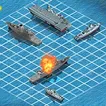



























Exploring Ice Games: Arcade Innovations and Nordic Competitions
Venture into the enchanting realm of ice games, where the chill of the arcade meets the frosty fervor of Nordic competition. This exhilarating domain is not just a playground of wintry fun; it’s a testament to human creativity and the enduring spirit of play. Ice games have carved a niche in the entertainment world, evolving from simple, frost-covered amusements to complex, technologically advanced experiences that captivate players across the globe.
The story of ice games is one of innovation and tradition, where the latest digital advancements blend with age-old customs to create a unique genre of entertainment. These games have transcended their humble beginnings to become a dynamic part of arcade culture, offering an escape into icy landscapes and thrilling challenges that test the dexterity and ingenuity of players.
But the excitement doesn’t end in the arcade. The Nordic regions, with their deep winters and cultural affinity for ice, have given rise to a range of competitive events that celebrate the skills and athleticism required to master the elements. These competitions are not just about the thrill of victory; they are a showcase of the rich heritage and communal spirit that characterize the Nordic way of life.
As we delve deeper into the world of ice games, we’ll uncover the fascinating evolution that has shaped this industry, the cultural significance that has made it a phenomenon, and the global impact that continues to grow. Join us on this journey through the frosty arcade innovations and the heart-pounding excitement of Nordic competitions, where every game is an adventure waiting to unfold.
Innovative Concepts in Entertainment: The Rise of Ice Games
Ice games, once a novel concept, have surged in popularity, becoming a mainstay in the world of entertainment. Their ascent can be traced back to the simple joy of gliding on ice, an activity that has fascinated cultures for centuries. This fascination laid the groundwork for the development of ice games, which ingeniously combine the allure of icy environments with the thrill of interactive play.
The journey from rudimentary ice challenges to sophisticated gaming experiences has been driven by a series of technological leaps. Early iterations were mechanical, relying on the physical properties of ice to entertain. However, as technology advanced, so did the complexity and appeal of these games. The integration of digital elements allowed for more immersive experiences, with virtual ice landscapes and simulated chill adding to the authenticity and excitement.
The growth of ice games is also a reflection of their cultural impact. They have become a medium through which stories of wintry escapades are told and shared, connecting players to the thrill of ice-bound adventures regardless of their geographical location. The games’ ability to transport players into a world of frost and fun has solidified their position in the entertainment sector.
Moreover, ice games have evolved to cater to a wide audience, from casual players seeking a quick diversion to competitive spirits craving mastery and recognition. Their rise is a testament to the human desire for innovation and engagement, proving that even the coldest of themes can ignite the warmth of excitement and joy in the hearts of players around the world.
Technological Innovations and Game Mechanics in Ice Games
Technological advancements have been pivotal in transforming ice games from niche novelties to mainstream entertainment marvels. The integration of cutting-edge technology has not only enhanced the visual and tactile realism of these games but also introduced new dynamics in game mechanics, elevating the user experience to unprecedented levels.
At the heart of this transformation is the development of sophisticated simulation technologies. These allow players to immerse themselves in hyper-realistic ice environments, complete with the subtle nuances of light reflecting off icy surfaces and the sound of blades carving through a frozen landscape. The physics engines behind these games have become so advanced that they accurately mimic the slip and slide of movement on ice, challenging players to adapt their strategies in real-time.
User interfaces have also seen significant innovation. Gone are the days of clunky controls and static screens. Today’s ice games boast intuitive interfaces that respond to the slightest touch or movement, allowing for a more natural and engaging interaction. Some even incorporate motion detection and haptic feedback, providing a tactile response that replicates the sensation of ice beneath one’s feet or the impact of a puck.
Moreover, the rise of digital features has introduced new layers of gameplay. Players can now customize their experiences with a variety of virtual equipment, compete in online leaderboards, and even partake in multiplayer challenges that span continents. These digital integrations not only add depth to the games but also foster a sense of community among players, as they share tips, celebrate victories, and bond over their love for the icy challenge.
In essence, the technological innovations in ice games have not only redefined the boundaries of what’s possible in arcade entertainment but have also ensured that these games continue to captivate and challenge players in a rapidly evolving digital world.
The Cultural Phenomenon of Nordic Ice Competitions
Nordic ice competitions are more than mere sporting events; they are a vibrant tapestry woven from the threads of history, culture, and community spirit. These contests, set against the stark beauty of the Nordic landscape, are a testament to the human connection with the natural elements and the enduring appeal of winter sports.
The origins of these competitions can be traced back to the traditions of the Nordic people, for whom ice and snow have always been integral parts of life. Over time, what began as essential survival skills have evolved into a series of organized events that highlight the agility, strength, and grace of the participants. From speed skating to ice fishing, and from hockey to the unique equestrian sport of skijoring, these games celebrate the diverse ways in which ice can be both a challenge to conquer and a playground for the adventurous.
These competitions do more than just showcase physical prowess; they serve as a focal point for community gathering and pride. They are occasions where stories are passed down, local heroes are made, and the collective identity is reinforced. The events are imbued with a festive atmosphere, where the chill of the air is offset by the warmth of camaraderie and the shared excitement of spectators and competitors alike.
In the modern era, Nordic ice competitions have not lost their allure. They continue to draw crowds, captivate audiences worldwide, and inspire a new generation to embrace the icy thrill of competition. The events have also become a means to promote Nordic culture globally, introducing the world to the region’s rich heritage and the resilient spirit of its people.
Ultimately, these competitions are a celebration of life in the Nordic winter—a life that, despite its harshness, is full of vigor, beauty, and the joy of communal achievement.




